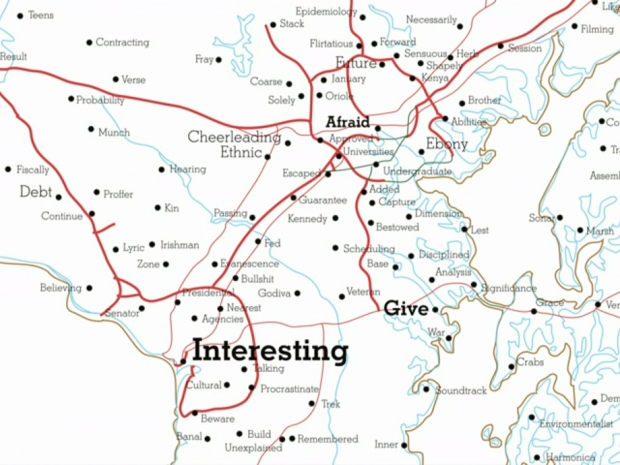Roger Luke DuBois is an American composer, programmer, new media artist, performer, record producer and professor based in New York City. During a recent TED Talk, DuBois highlighted a few of his more notable artistic data visualizations, including the idea of taking online dating profile data from every zip code in the United States and transforming it into topographical maps using the most “frequently used word” in every American city. The end result can be deemed impressive, surprising, heartbreaking, interesting and even “hipster,” according to the map outcomes.
For his series of maps called “A More Perfect Union,” DuBois says that in 2011, he became obsessed with the words people use to describe themselves in online dating profiles. According to a New York Times post, he then decided to join 21 online dating sites using various gender and relationship profiles from every zip code in America, downloaded all 19 million profiles, and then sorted the results using algorithms to determine the most commonly used words in each location.
Below is a topographic map of the state of Washington, pronounced by the word “Heartbreak” in Seattle, “Email” in Microsoft-based Redmond, and “Bodies” in Kirkland.
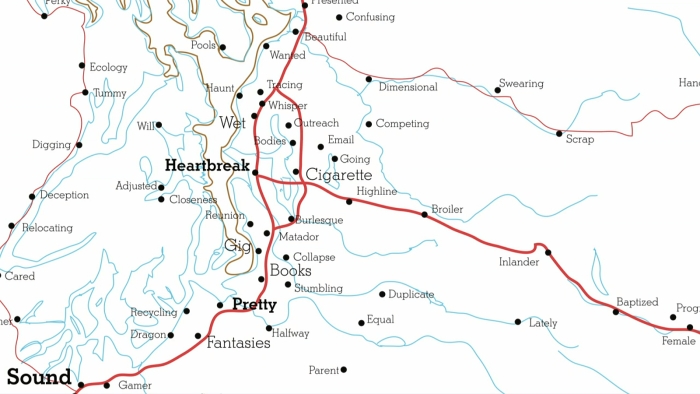
Washington State word analysis (Larger image here)
Here is another map of California’s major metropolitan areas, with the San Francisco Bay Area on the right (San Francisco Bay, East Bay and Silicon Valley) and Greater Los Angeles Area (Los Angeles, Orange County, Inland Empire) on the left. Los Angeles, home to Hollywood, is marked by the word “Acting” while Irvine, home to RED Digital cinema studios, is themed by the word “Director” and San Bernardino is characterized by the word “Industry.”

San Francisco Bay Area (left) and Greater Los Angeles Metropolitan Area (right) – (Larger image here)
In the state of Louisiana, many people still use the word “flood” in New Orleans from the 2005 hurricane event, while Lafayette uses “Cajun” and Baton Rouge uses “Curvy” and “Dedication.”
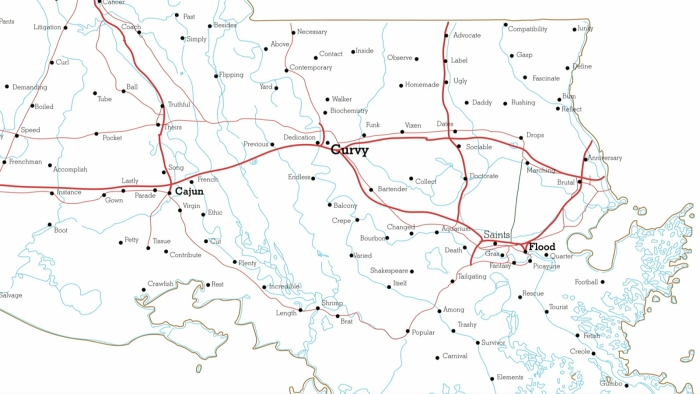
Louisiana State word analysis (Larger image here)
Meanwhile in Texas, folks in Dallas and Fort Worth often say the words “Loving,” “Aspect” and “Symphony” while San Antonio uses “Correct,” Houston uses “Rich,” and Harris County uses “Updated,” just to name a few.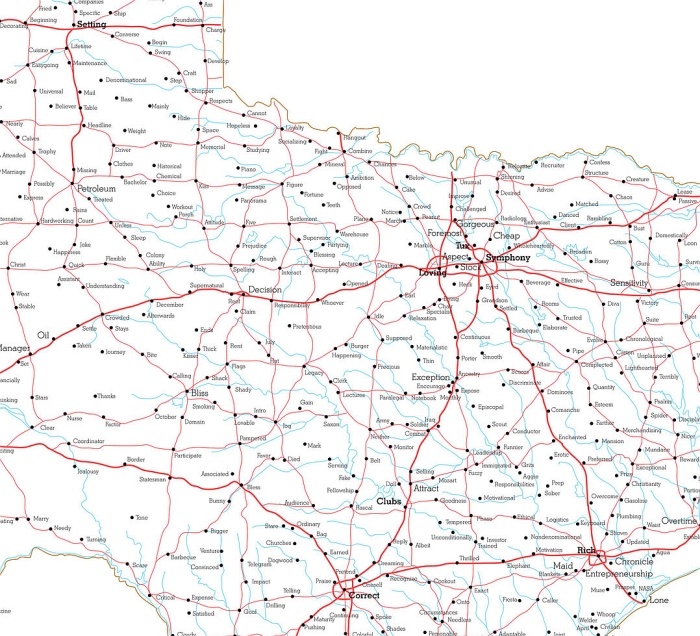
Texas State word analysis (Larger image here)
Works on display at the Bowdoin College Museum of Art will cover DuBois’ 15-year artistic history since the early 2000s, from large-scale public installations, film, to the above mentioned data-based topographic maps, and some rather interesting time-based portraits.
DuBois says there are three major themes at play in his work – they include mining and shaping data into visual art, investigating temporality and the study of the flow of time, and the construction of modern portraiture (how we perceive ourselves and others).
“As an activist who regularly leverages data and the interconnectivity of online networks to raise awareness about political and social issues, our interests are aligned in a variety of ways which will inform the forthcoming work,” DuBois said in a dialogue with SunJournal.
The data artist claims he will always use technology to expose a perception of a subject that is not normally visible. While his map visualizations are quite interesting, his artistic elements usually address pressing issues in American culture and portraiture, mainly with emphasis on government collection of private and personal information during a time when the sanctity of personal data is at stake in light of data protection laws. Another example of his work is a presidential speech analysis of the words most frequently used by each of the 44 presidents since George Washington took office in 1789.
The words most regularly used by presidents Ronald Reagan (top left), Bill Clinton (top right), Lyndon Johnson (bottom left) and Richard Nixon (bottom right)
“Luke’s work does a fascinating job of creating portraits of people in the 21st century and capturing the ways in which we interact with one another,” says Anne Collins Goodyear, director of the Bowdoin College Museum of Art.
His work will be running from March 31st to September 4th at the Brunswick, Maine museum with free admission and full museum accessibility.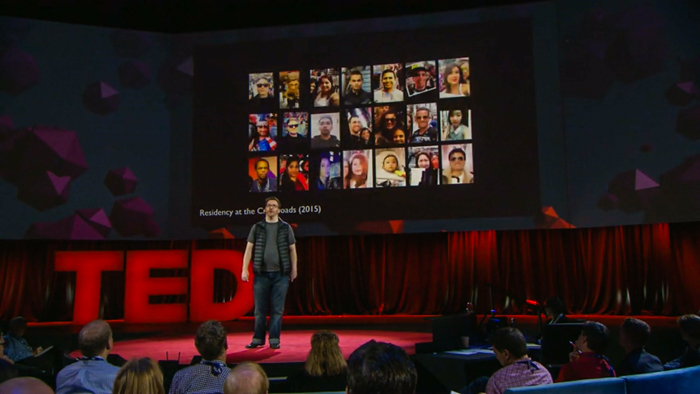
The TED Talk from February 17, 2016 can be found here.

